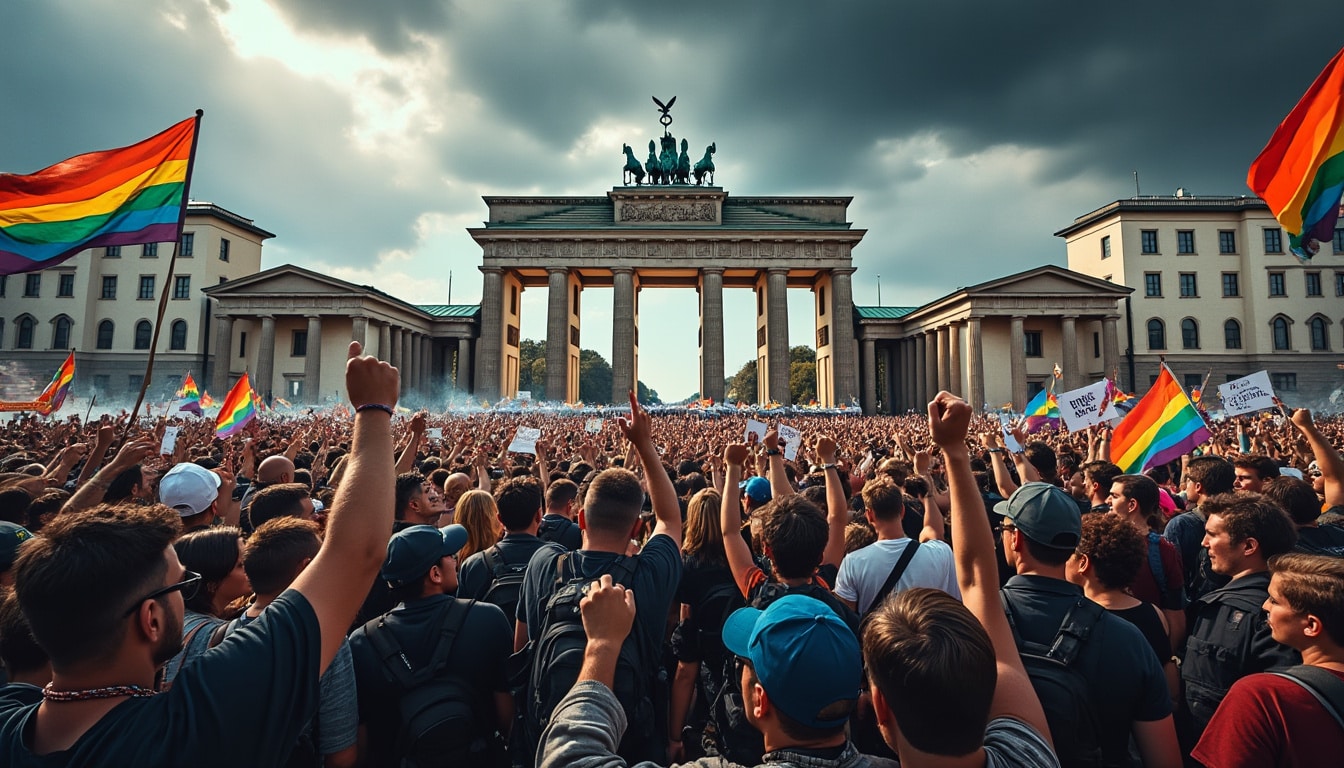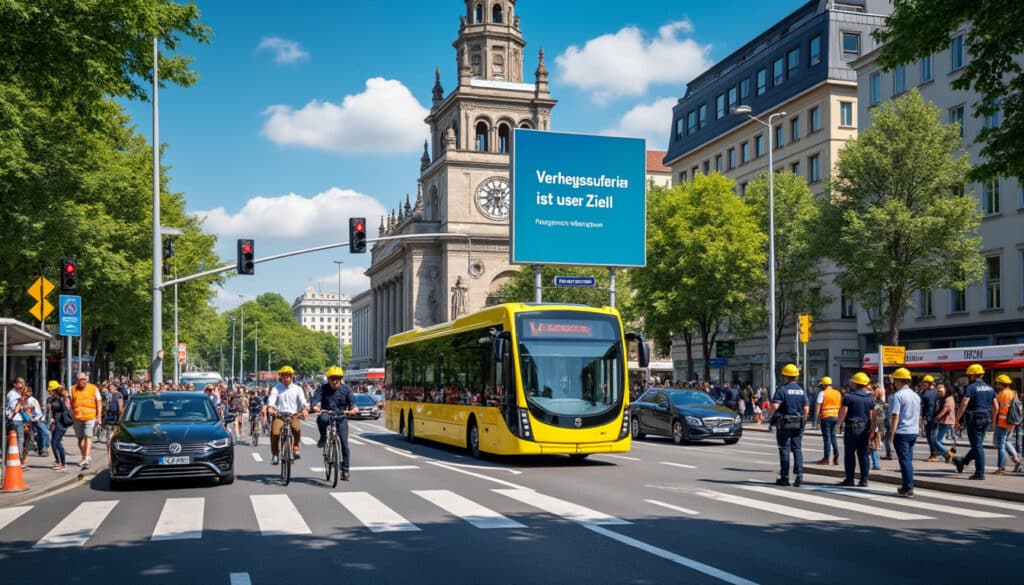In recent years, Berlin has seen a surge in protests and social unrest, reflecting a complex tapestry of political, social, and economic frustrations. From controversial asylum policies to resistance against far-right movements, the streets of Berlin have become a vibrant stage for public expression and revolutionary fervor. This article explores the forces driving these protests, examining the intersections of political activism, community solidarity, and the voices of resistance that echo through the capital. As waves of demonstrations sweep across the city, understanding the underlying dynamics becomes crucial for comprehending the broader socio-political landscape of Germany.
Political Uprising: The Collapse of Germany’s “Firewall”
On a pivotal Thursday, Berlin witnessed a political transformation that would reshape the country’s post-war political landscape. The passing of a motion in the German Bundestag, with backing from the far-right Alternative für Deutschland (AfD), shattered the longstanding “Brandmauer” — an unofficial pact preventing radical right-wing influence. This extraordinary alliance sparked an instant response from citizens keen on defending democratic integrity and justice. 🗳️

At the heart of the unrest was the controversial vote, in tandem with the CDU, AfD, and FDP’s cooperation, which incited a backlash from the public. Predominantly leftist groups, alongside activists and various NGOs, mobilized swiftly. Thousands gathered outside the CDU headquarters, brandishing banners declaring solidarity and resistance against the far-right’s creeping influence in policies, especially the controversial economic and asylum reform plans promoted by CDU leader Friedrich Merz.
Merz’s proposed five-point migration plan, introduced as a reaction to a recent violent incident, was seen by many as aligning too closely with the AfD’s notorious hardline stance on immigration. The plan’s drastic measures included rejecting asylum claims, immediate detentions for those ordered to be deported, and significantly increased deportations. Such policies were met with fierce backlash and were tagged as a direct challenge to Germany’s post-war consensus of social inclusion and justice. But was this uprising an awakening to a larger political reality, or a fleeting moment of resistance?
The Role of Social Media in Mobilization
The speed and scale of mobilization against the CDU’s motion were unprecedented, largely thanks to the power of social media platforms. These platforms have become crucial tools for activists worldwide, enabling them to connect, organize, and mobilize efficiently. 🚀
In Berlin’s case, platforms like Twitter, Instagram, and Facebook played an instrumental role in amplifying voices and highlighting injustices. Hashtags calling for justice, democracy, and resistance against far-right policies trended swiftly, acting as rallying cries for Berliners and sympathizers nationwide. Such digital strategies allowed dissenters to not only gather supporters quickly but also maintain pressure on political parties and leaders, compelling them to publicly respond to mounting criticisms.
The internet showed its prowess not only in organizing physical gatherings but in shaping public opinion and drawing international awareness to Berlin’s local issues. Discussions about the broader implications of the “Brandmauer” collapse expanded beyond Germany’s borders, garnering attention globally. This blending of digital activism with real-world repercussions underscores a burgeoning trend in modern resistance movements.
Impact of the “Firewall” Collapse on Berliners
The symbolic collapse of this political “firewall” has had far-reaching consequences. Many Berliners are grappling with the sudden shift in their country’s political dynamics, nursing fears of a resurgence in far-right influence. The AfD’s collaboration with mainstream parties evokes memories of historical societal divides and stirs anxieties about a repeat of troubling pasts.
The societal impact is palpable, with communities on edge and an increased dialogue on the implications of socio-political shifts in Germany’s identity. Many Berliners, known for their vibrant cultural diversity and strong activist roots, are committed to ensuring that their city remains a beacon of progressive values and inclusive policies.
Yet, as this chapter unfolds, the path forward remains fraught with questions: Can the ambitious activists maintain their momentum? Will political leaders yield to public pressure? How will Berlin, as a city, leverage this moment to redefine its socio-political narrative?
Key Players in Berlin’s Protest Scene
Beneath the summer protests’ hustle lies a network of dedicated individuals and organizations tirelessly advocating for change. Each demonstration embodies a tapestry of voices, aspirations, and a shared commitment to justice. Understanding these dynamics offers insights into the very fabric of Berlin’s protest scene.
Grassroots Activism and Community Mobilization
Berlin’s activists have crafted a robust grassroots network that acts as the fulcrum of its protest activities. These community-driven initiatives foster solidarity and nurture a shared vision for Berlin’s social future. 🌍
- 🔹 Neighborhood Councils: Often set at the heart of mobilization efforts, neighborhood councils bring together local voices, prioritizing community-driven decision-making and addressing grassroots issues.
- 🔹 Collectives and Networks: Various collectives, from feminist to eco-conscious groups, amplify specialized agendas, ensuring a multifaceted approach to activism.
- 🔹 Youth Movements: There’s a visible energy and enthusiasm from younger generations, eager to inherit and redefine the protest landscape with fresh perspectives and dynamic methodologies.
These grassroots efforts are mirrored in the presence of established NGOs and advocacy groups. Such organizations provide a support framework, offering resources and channeling international attention onto Berlin’s demonstrations.
The Influential Figures Shaping Protests
Select individuals within Berlin have emerged as symbols of the city’s activist spirit. Their roles transcend mere participation; they curate, guide, and invigorate the movement.
| Name | Role | Influence |
|---|---|---|
| Anna Heller | Environmental Advocate | Known for organizing climate marches |
| Jamal Al-Mansur | Social Media Strategist | Instrumental in digital mobilization |
| Elke Schneider | Human Rights Lawyer | Provides legal support to detained protesters |
These individuals not only bring expertise to their respective fields but also serve as beacons of hope and resistance. Their stories inspire new participants, fostering a sense of unity and purpose. As they fight for justice within Berlin, they simultaneously pave the way for future revolutionary endeavors, breathing life into the city’s activist narrative.
Financial and Institutional Backing
The mobility of Berlin’s protests often depends on sufficient funding and institutional support. Both local and international organizations provide crucial resources—from financial aid to material support—that sustain the momentum of Berlin’s protest scene.
European human rights groups and global environmental agencies frequently ally with Berlin advocates, strengthening their capacities and broadening their reach. Additionally, cultural programs and inclusive policy-making processes create sustainable channels for ongoing protest activities. Berlin’s activists continue to leverage these infrastructures, balancing revolutionary ambitions with structured approaches, ensuring that their voices remain at the center of political discourse.
The Intersection of Berlin’s Cultural Legacy and Modern Protests
Berlin’s legacy as a locus of cultural transformation and resistance forms a backdrop against which modern protests gain their strength and narrative. The city’s historical tapestry of social upheaval, particularly during the Cold War and the fall of the Berlin Wall, underpins contemporary activism, creating a unique context for social movements. 🕊️
Historical Parallels and Modern Mobilization
The fall of the Berlin Wall in 1989 marked a turning point not just for Germany but for the world. This iconic event has become a symbol of struggle against division and repression, providing a powerful historical grounding for modern protest movements. Many activists draw on the parallels of past uprisings to galvanize present-day actions, emphasizing the enduring battle for justice and freedom.
As Berlin continues to evolve, its cultural landscape serves as a constant reminder of historical victories and the ongoing fight for equality. Just as the wall came down, modern protesters see their resistance as a pathway to dismantling figurative walls—be it in the form of social inequality, discriminatory policies, or political repression.
The significance of Berlin’s cultural and revolutionary heritage cannot be overstated. As demonstrations unfold in the shadow of iconic landmarks like the Brandenburg Gate and the remnants of the wall, they revive memories of triumphs over adversity, compelling new generations to partake in the continuity of progressive change.
Art, Music, and the Spirit of Resistance
Art and music are deeply interwoven with Berlin’s protest culture. The city’s vibrant artistic communities have always utilized their creative expressions as tools of social commentary and political discourse. 🎨🎵
- 🎨 Street Art: Murals and graffiti serve as visual narratives that capture public sentiment and rally calls for unity and action.
- 🎵 Music Festivals: Ranging from techno raves to punk concerts, these cultural events offer platforms for political speech and mutual sharing of revolutionary ideas.
- 🗣️ Public Theatre: Performances often depict societal critiques, drawing audiences into the immersive nature of Berlin’s activism.
These outlets not only empower individuals but also ensure that the message of resistance permeates beyond the protests themselves, embedding it deeply into daily urban life. Whether through colorful expressions on Berlin’s walls or through captivating melodies, the cultural resilience remains a powerful force that underpins and sustains ongoing social mobilization.
Cultural Events and Protests: A Symbiotic Relationship
In Berlin, cultural events are not only sites of celebration but also opportunities to challenge societal norms and champion causes. These gatherings, whether formal festivals or spontaneous street performances, serve dual purposes. They allow for the celebration of cultural diversity and history, while simultaneously becoming dynamic platforms for political dialogue and organizing resistance.
This symbiotic relationship between culture and protests fosters an environment where creativity and activism feed off each other. The multiplicity of cultural narratives actively shapes protest strategies, while the dynamic energy of demonstrations enriches Berlin’s cultural milieu. Through this mutual reinforcement, Berlin exemplifies how cultural outlets and political activism can catalyze transformative change.
Significant Events Fueling Protests and Social Unrest
The fabric of Berlin’s contemporary protests is woven from specific events and broader structural factors that have incited public outcry. Understanding these moments of turmoil contextualizes the fervor seen on the streets today.
The Response to Asylum Policies
One of the catalysts for the recent wave of demonstrations in Berlin has been the contentious asylum policies proposed by the CDU, especially following events such as the knife attack in Aschaffenburg. Such policies have drawn criticism for their harshness, perceived as undermining Germany’s commitment to humanitarianism. The proposals, which involve increased deportations and rigid border controls, have been seen as a departure from the values that many Germans hold dear.
This has been particularly poignant in Berlin, a city celebrated for its diversity and multicultural ethos. Activist groups, alongside concerned Berliners, have staged numerous demonstrations to stand against what they view as draconian measures that risk alienating vulnerable populations and tarnishing Germany’s international image.
- 📍 Protests at the Bundestag: With significant numbers gathering to demand more compassionate social policies.
- 🚨 Solidarity Marches: Coordinated by asylum support networks, emphasizing empathy and inclusivity.
- 🎤 Public Debates: Hosted by universities and cultural institutions, fostering dialogue about Germany’s refugee policies.
Economic Discontent and Social Justice
Economic factors have also contributed to social unrest in Berlin. The intersection of socio-economic disparities, housing crises, and rising costs of living has placed immense pressure on citizens. Many Berliners feel left behind by policies that favor economic development over social welfare. These grievances have led to sizable protests aimed at amplifying economic justice and advocating for more equitable resource distribution.
With rent prices soaring and income inequality widening, Berlin’s streets have become battlegrounds for economic justice activists campaigning for accessible housing and fair wages. Grassroots movements often converge with international platforms to discuss solutions and heighten awareness about economic disparities.
As these forces interplay, they highlight the ripe conditions for persistent unrest and mobilization. Berlin serves as a microcosm of broader global struggles for economic and social justice, painting a vivid picture of ongoing global challenges.
Environmental Concerns: A Catalyst for Change
Environmental issues are another compelling driver of protests in Berlin. The city, known for its green spaces and environmental awareness, has witnessed fervent activism around climate policies and ecological sustainability. 🌿
Climate strikes have been a regular occurrence, inspired largely by global movements such as Fridays for Future. These protests summon Berliners of all ages to join calls for substantial policy shifts toward sustainable practices. The emphasis lies on transitioning to a greener economy, preserving natural spaces, and prioritizing renewable energy resource investment.
To bring awareness to these crucial issues, Berlin has seen collaborative efforts between environmental NGOs, educational campaigns, and local government initiatives striving to align the city with EU environmental targets. As the urgency of the environmental crisis becomes increasingly pronounced, Berlin continues to set an example as a proactive city determined to drive meaningful ecological change.
Pathways to Resolution and Future Perspectives
The culmination of protests and unrest implies a deeper necessity for systemic reform and dialogue in Berlin. Through addressing the root causes of these upheavals and fostering inclusive discussions, there exists a potential pathway towards reconciliation and progress.
Policy Reform and Political Dialogue
At the heart of resolving unrest lies the necessity for policy reform that aligns with the ethos of justice and equality. Political leaders must recognize and address public dissent through transparent and inclusive policy-making processes.
- 🗨️ Inclusive Policy-making: Involving diverse voices in decision-making can bridge gaps and restore public trust.
- 🗳️ Reevaluation of Immigration Policies: Ensuring compassionate, fair, and effective policies that respect human rights.
- 🔄 Sustainable Economic Models: Prioritizing socio-economic welfare can foster stability and prosperity.
Engaging in Constructive Dialogue
An essential aspect of moving forward involves engaging all stakeholders in constructive dialogue. Facilitative platforms can offer spaces for differing perspectives to converge, allowing for resolution through negotiation rather than discord.
From town hall meetings to digital forums, creating opportunities for dialogue enhances understanding and breaks down barriers. By highlighting shared objectives and fostering collaboration, Berlin can harness diversity for collective action and societal harmony.
Empowering Future Generations
Empowerment of future generations through education and leadership initiatives ensures sustained change. Educational programs emphasizing civic responsibility and critical thinking can nurture a proactive populace committed to shaping tomorrow’s society.
- 🔍 Educational Initiatives: Teaching the values of empathy, activism, and community engagement.
- 🌐 Youth Leadership Programs: Training young leaders in advocacy, dialogue, and sustainable development.
Inspiring and equipping Berlin’s youth with the tools needed for transformative leadership ensures that the spirit of resistance and progress continues into future decades.
Berlin, with its vibrant mosaic of voices and dynamic history of activism, remains at the forefront of socio-political evolution in Germany. As the city continues to navigate its path through protests and unrest, it can become a model for global change and resilience.
FAQ
1. How have social media platforms impacted Berlin’s protests?
Social media has significantly enhanced the ability of activists to organize, share information, and raise awareness. Platforms like Twitter and Instagram enable quick mobilization and international spotlight, crucial for the success of modern protests.
2. What historical events influence current protests in Berlin?
The fall of the Berlin Wall is a defining historical event influencing current protests. It serves as a powerful symbol for social change and inspires modern movements to dismantle contemporary barriers, whether political or social.
3. How does grassroots activism contribute to Berlin’s protest culture?
Grassroots activism is fundamental to Berlin’s protest culture. It brings local voices to the forefront, ensures diverse issues are addressed, and fosters a strong sense of community and collective purpose.
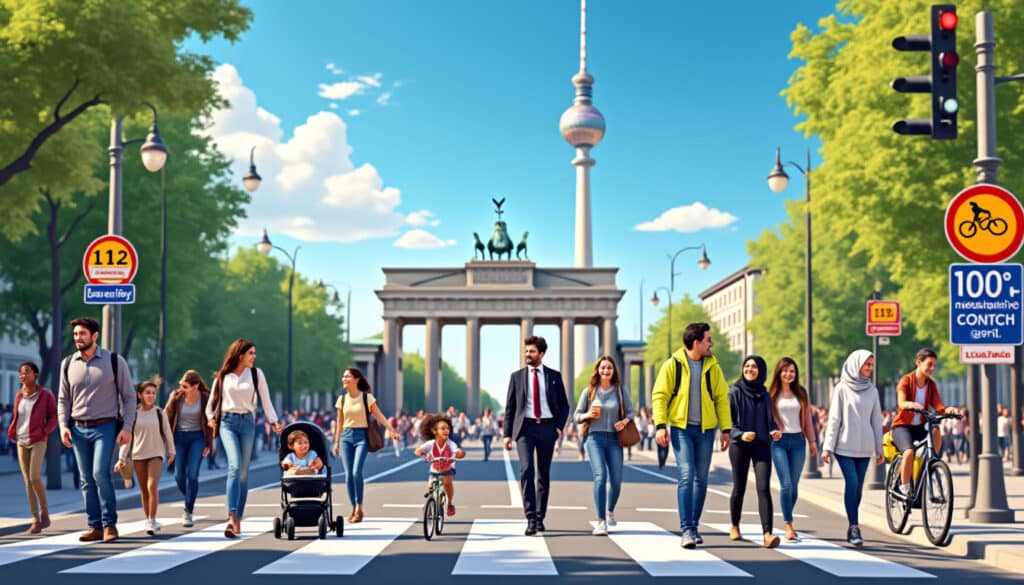
Planning an adventurous trip to Berlin? Secure your journey with our comprehensive safety guide, making sure you traverse this urban hub with confidence. Berlin, a city pulsating with energy, offers an eclectic mix of history, culture, and nightlife. Yet, navigating…
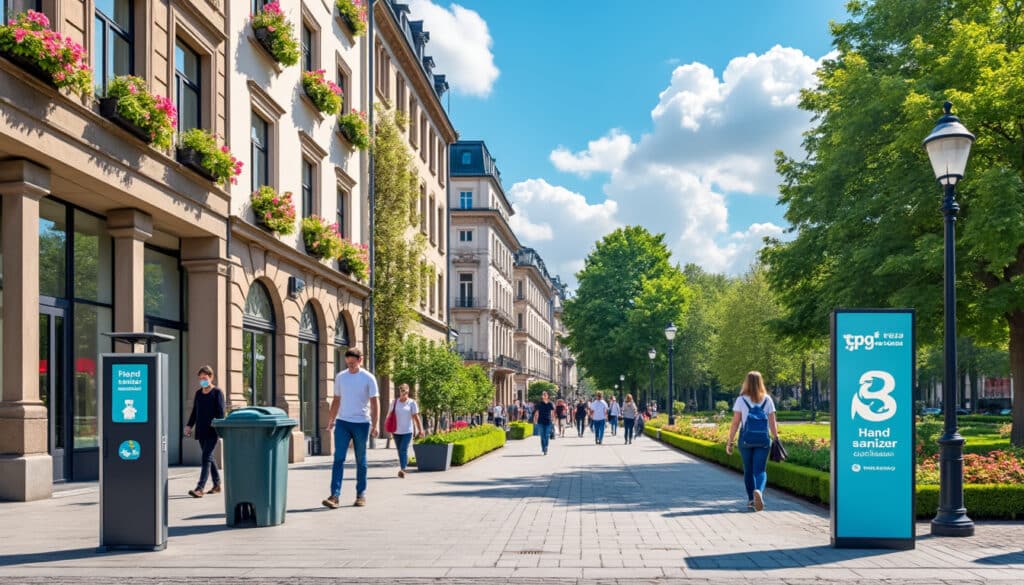
Cleanliness and hygiene in Berlin
Berlin, a city known for its vibrant culture and dynamic lifestyle, places a significant emphasis on cleanliness and hygiene as the cornerstone of public well-being. With rapid urban development, maintaining a pristine environment in Berlin is more crucial than ever.…
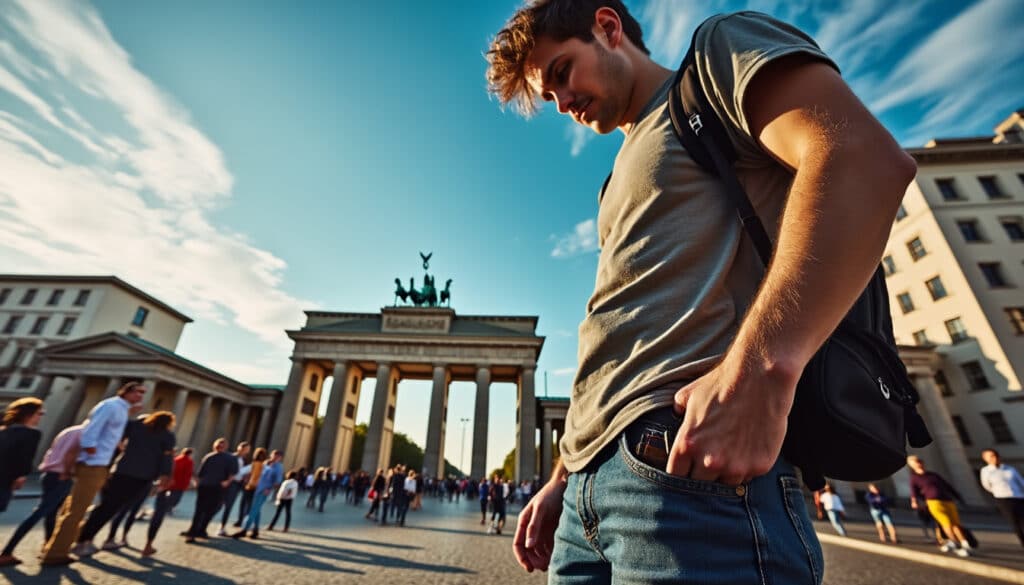
Pickpocketing and theft in Berlin
Berlin, a dynamic city that has long been a magnet for history buffs, culture enthusiasts, and nightlife seekers, draws millions of visitors each year with its iconic landmarks, vibrant scene, and diverse neighborhoods. Yet, as with any major metropolitan area,…

Safety in Berlin for travelers from different countries
Berlin, the dynamic capital of Germany, beckons travelers with its rich tapestry of history, culture, and avant-garde arts. For those planning to explore this cosmopolitan city, safety is a paramount concern. The bustling streets are home to a captivating mix…

